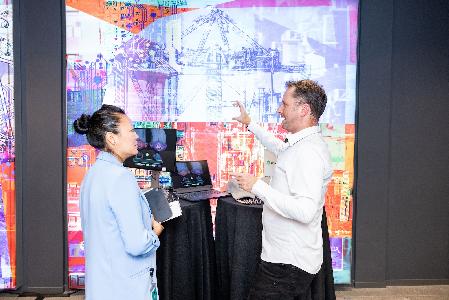Computers have evolved significantly over time. At first, they looked like giant control-panel rooms; now, they can fit into the palm of your hand.
The same can be said of 3D printers, which have experience a parallel progression. Many may be surprised to learn that 3D printers actually debuted in the 1980s. One way they were used was to build smaller airline parts, which could be attached and tested to withstand various weather conditions.
After 30 years in aviation, building airplanes for U.S. government surveillance, Joe Otto pondered what his next career step would be.
Designing with other companies new products and tools, how interesting is that?
After researching business ideas, he came back to something he knew quite well: 3D printing.
Born and raised in Newark, Otto opened Sovereign Air in Newark in May 2014. His shop includes 10 printers of various sizes and capabilities, as well as two scanners.
“In aviation, we used 3D printing for rapid prototyping. I love to build things,” said Otto, who currently lives in Maryland and is looking to relocate back to Delaware. “Designing with other companies new products and tools, how interesting is that? 3D printing reaches kids in elementary school to rocket scientists and to senior citizens as a hobby.”
The 3D-printing skills and concepts Otto picked up in his three decades of aviation experience have served him well in this next step of life. He is accustomed to the process of 3D printing: starting with an idea, building a prototype, then testing the product on the market.
His shop sells consumer and prosumer printers, and services them, as well. Sovereign Air also hosts classes and workshops, which help get the community involved in 3D printing. Otto often travels across the state, showing off what 3D printers can do. He’s been to schools, robotics events, Rotary and Lions clubs, and more.
In his 10 months since opening, his company has attracted a list of clients, including those from the aviation industry, automotive industry, major engineering firms, local hospitals and doctors, artists and people who create jewelry, he said.
“We created a foot for a surgeon,” Otto said. “Between converting the file, printing the part, cleaning it up and delivering it, it cost less than $500. The surgeon now has the capability to hold the foot in their hand. It’s a great tool for coordinating the surgeon team, with the individual or the family.”
Otto said one aviation company that signed on to work with him has purchased 600 of the same parts since June.
3D printing is a lower-cost option for many of the industries his company services, but for different reasons.
In the auto and aviation industries, a printed part may weight and cost less to produce. If it’s a part on a plane, he said, this lightens the weight of the entire plane, saving money on fuel and other resources.
In the medical field, a printed model can save time for hospitals and doctors, which, in turn, ultimately saves money, he added.
Otto said he believes his company is the only organization scaling 3D printing in this way on the East Coast. But across the country, 3D printing is ramping up to serve countless industries quickly and efficiently.
Moving forward, Otto said he will continue to travel to schools, robotics events, expos and so on to get the word out about what his company does. Sovereign Air is also gearing up to host several spring classes and workshops.
“It’s about getting people to know our capacity and realizing what 3D printing can bring to everybody,” Otto said.
Before you go...
Please consider supporting Technical.ly to keep our independent journalism strong. Unlike most business-focused media outlets, we don’t have a paywall. Instead, we count on your personal and organizational support.
Join our growing Slack community
Join 5,000 tech professionals and entrepreneurs in our community Slack today!

Ready to get rid of electronics? Here’s how to properly dispose of them in Delaware

This exec spent 30 years at one company, and thinks more people should do the same

AI in action: How InsightFinder AI and Robin AI transform IT and legal workflows at major organizations


